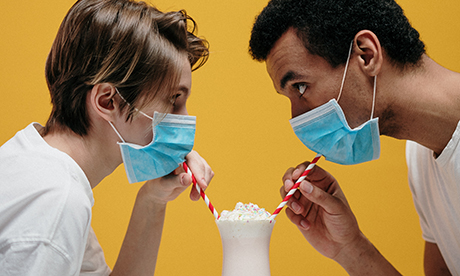COVID-19 restrictions are winding down and in Australia, as of Friday anyone who tests positive will no longer be required to isolate.
It is one of the last COVID rules to be scrapped following two years of restrictions lead by health advice.
Masks, too, seem to be being left behind. Once mandatory in public places, as the rule have loosened, fewer people are choosing to wear one.
So what does that mean for people who are still masking up? Are you still protected if others aren’t wearing one?
Here’s what you need to know:
Do I still have to wear a mask?
In some places, yes. Across Australia masks are still required in hospitals and healthcare facilities.
This rule applies to anyone aged over 12 except in Victoria where it applies to anyone older than 8.
Masks are also required in indoor areas for anyone who tests positive to COVID-19 or is a close contact, with the exception of your own home.
In most states masks are also required in correctional facilities and justice centres.
However, mask wearing is still encouraged by the states on public transport, in settings where you can’t physically distance and when around people who may be vulnerable to COVID-19.
Will wearing a mask stop you getting COVID if not one else is wearing one?
Wearing a mask will provide some protection, but is unlikely to be completely effective, explains the head of epidemiological modelling at Monash University’s School of Public Health, James Trauer.
“It is also quite dependent on how the mask is worn and many other factors, such as the amount of COVID around in the community and the setting you visit,” he says.
He says wearing a mask is still considerably better than nothing.
“However, it is likely that the greatest effect is when the infector [the person with COVID] is wearing one,” he says.
“This is because wearing any sort of mask should markedly reduce the number of larger droplets they expel.
“This is one of the strongest justifications for requiring everyone in the population to wear a mask — particularly indoors where most transmission occurs.”
He says in Victoria multiple investigators were able to show a considerable reduction in transmission when the state-mandated face coverings in most settings in July 2020.
“We likely saw that effect because even people who didn’t have symptoms and so didn’t know they had COVID were still wearing masks and so reducing their risk of transmitting the infection to others,” he says.
“A review of population-wide studies found that if everyone in the population wears a mask, the overall infectiousness of COVID can be reduced by about 15-20 per cent.”
Deakin University Professor and Chair in Epidemiology at the School of Health and Social Development Dr Catherine Bennett agrees there’s evidence which proves masks reduce COVID transmission rates.
“A US study of close contacts of cases from a year ago found the infection rate in contacts was about 26 per cent if the infected person, their contact, or both were unmasked, but dropped to about 13 per cent if both were masked,” she says.
“However, an large population-based study in the UK when Omicron had taken over [in February 2022] did not find a difference in infections rates based on whether masks were worn indoors always, or less frequently.
“But this can also be complicated as those wearing masks might do that because they are at higher risk anyway, and might have had even higher rates of infection without them.
“So the advice remains that wearing masks is still a useful way to reduce your risk of picking up or spreading the virus.”
What’s the science of mask-wearing?
COVID is primarily transmitted by the respiratory route, meaning that breathing, coughing, speaking, laughing and singing can create particles that contain the virus and can be transmitted, Professor Trauer says.
“We divide respiratory transmission into the transmission with larger and smaller particles.
“Larger particles are called droplets, whereas smaller ones (called aerosols) can travel longer distances because they can be suspended in the air.
“In reality, there is no definite cut-off between these two processes, and both are likely important.
“In 2020, many policymakers and experts were too slow to recognise the importance of the smaller particles.
“We now have several lines of evidence to indicate that the smaller particles are important, even though it’s impossible to define this exactly.”
Dr Bennett says the finer the mask fibre and the better the fit, the better the mask works.
“This is why N95 masks are recommended, as they can even filter very small aerosol particles,” she says.
“Any mask that doesn’t fit properly doesn’t offer as good level of protection, the air can still pass between the mask and your skin, and fewer virus particles will be filtered out.” Continue reading
Additional readingNews category: Analysis and Comment.




